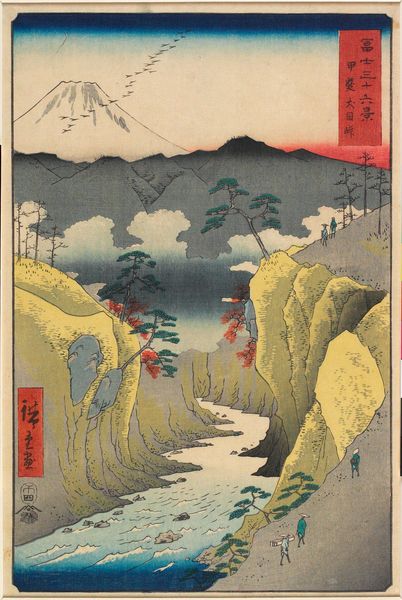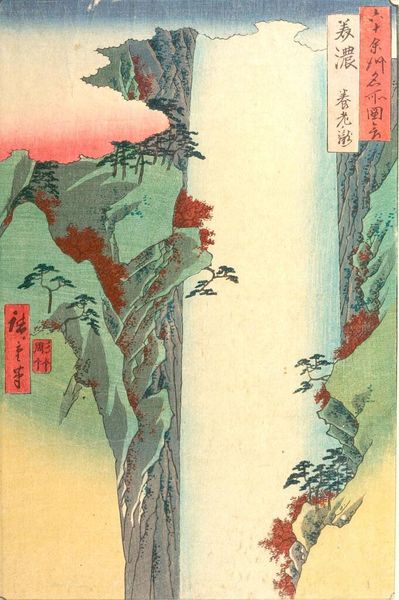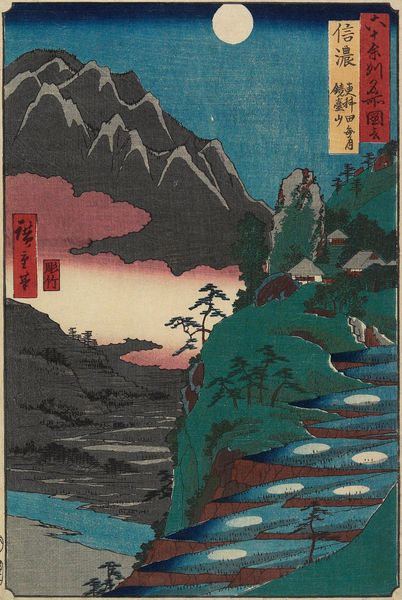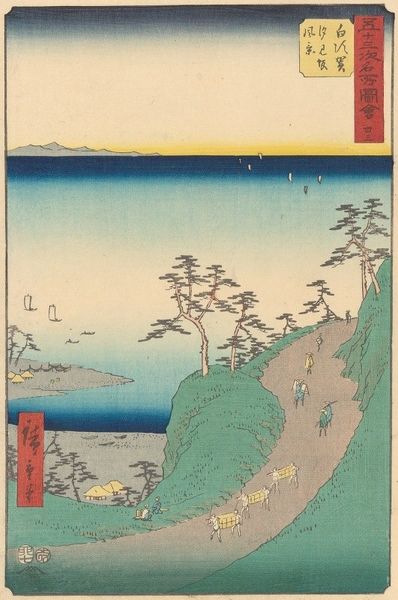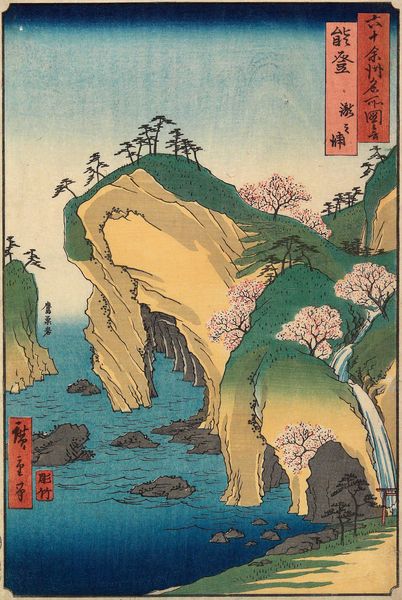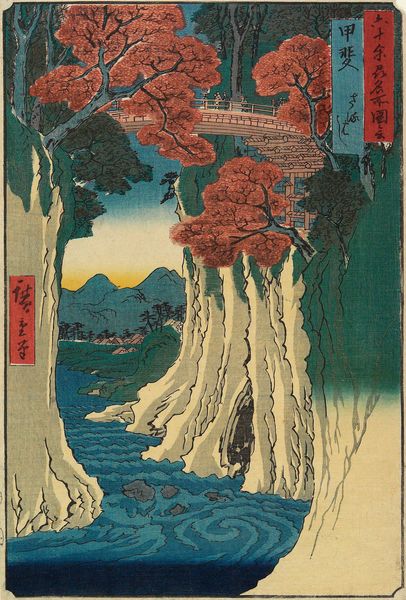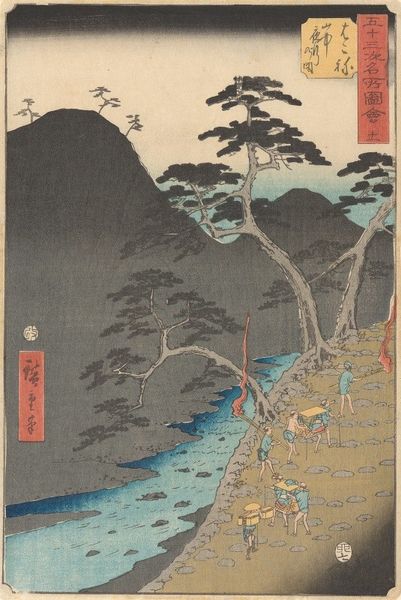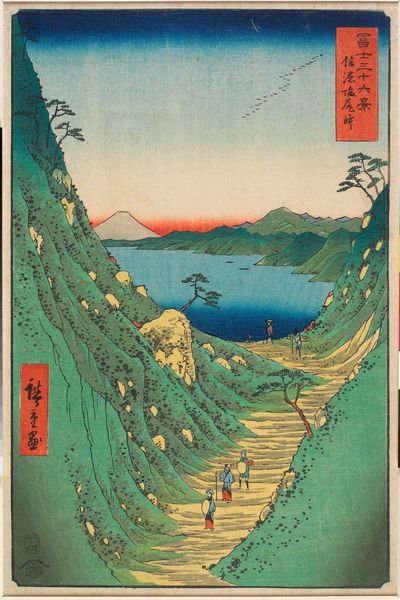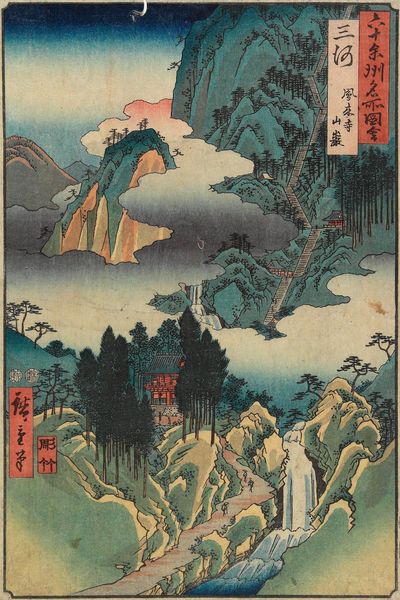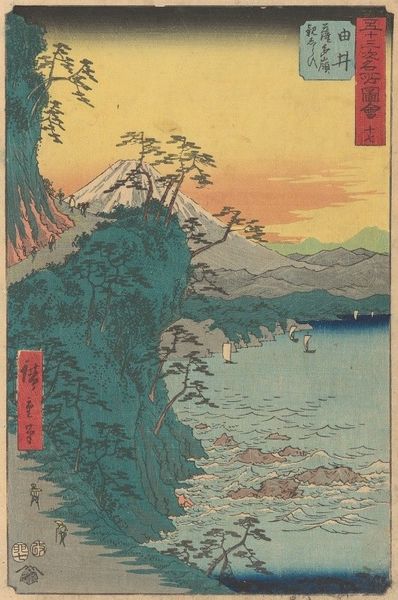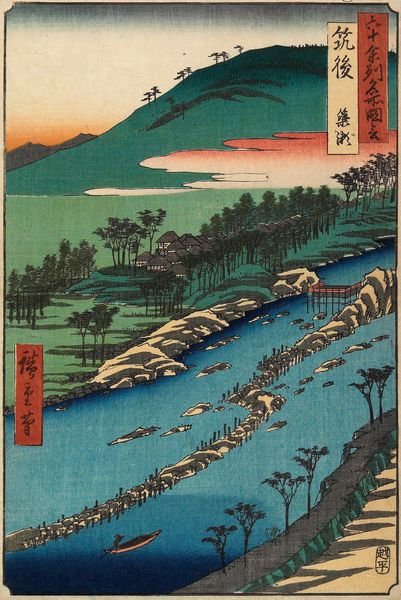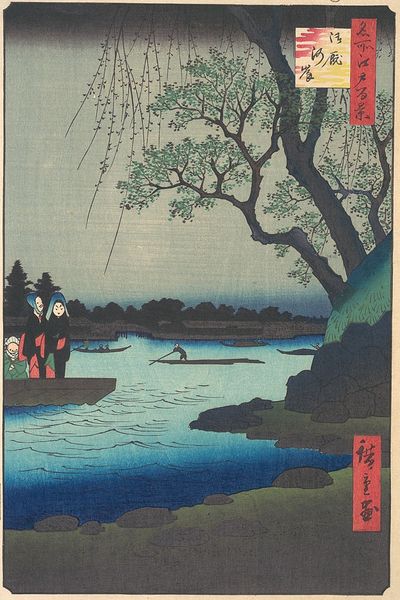
print, paper, ink, woodblock-print, wood
# print
#
asian-art
#
landscape
#
ukiyo-e
#
japan
#
paper
#
ink
#
woodblock-print
#
orientalism
#
wood
Dimensions: 13 5/8 × 9 1/8 in. (34.6 × 23.1 cm) (image, vertical ōban)
Copyright: Public Domain
Editor: We’re looking at “Yoro Falls” by Utagawa Hiroshige, a woodblock print made sometime between 1853 and 1858. It's striking how the artist creates such depth and dynamism with such simple lines and colors. What stands out to you about this piece? Curator: Well, beyond the visual appeal, I’m drawn to the way this print participated in the visual culture of 19th-century Japan, a time when landscapes became increasingly popular. Consider the political context: The Tokugawa shogunate was nearing its end, and people sought solace and inspiration in nature. This image, readily available as a print, democratized access to a romanticized version of the Japanese landscape, wouldn't you agree? Editor: That makes sense. So it's less about a literal depiction and more about an idealized representation? Curator: Precisely! And the role of the artist then is key. Hiroshige, and artists like him, weren’t just creating pretty pictures. They were actively involved in shaping national identity and projecting an image of Japan, both for domestic consumption and, increasingly, for Western audiences eager for what they considered "Oriental" imagery. How do you see that playing out visually in the print itself? Editor: The waterfall dominates, but the meticulously rendered trees and rocky cliffs create this sense of awe, a kind of sublime experience…it’s clearly more than just documentation. Curator: Exactly! The strategic use of color, the almost graphic simplification of forms – these aren't accidental. They speak to a sophisticated visual language that tapped into cultural ideals and expectations. This piece highlights how art functions not in a vacuum, but within a complex network of social, economic, and political forces. Editor: It’s amazing to consider the political implications of something that appears to be such a simple landscape print! Curator: Indeed. And that's the power of studying art history; it reveals these hidden layers and complexities that enrich our understanding of both the artwork and the society that produced it. I've really learned a lot looking at this piece from a new angle! Editor: Me too. It's given me a new appreciation for the social and cultural work that these prints were doing.
Comments
No comments
Be the first to comment and join the conversation on the ultimate creative platform.
